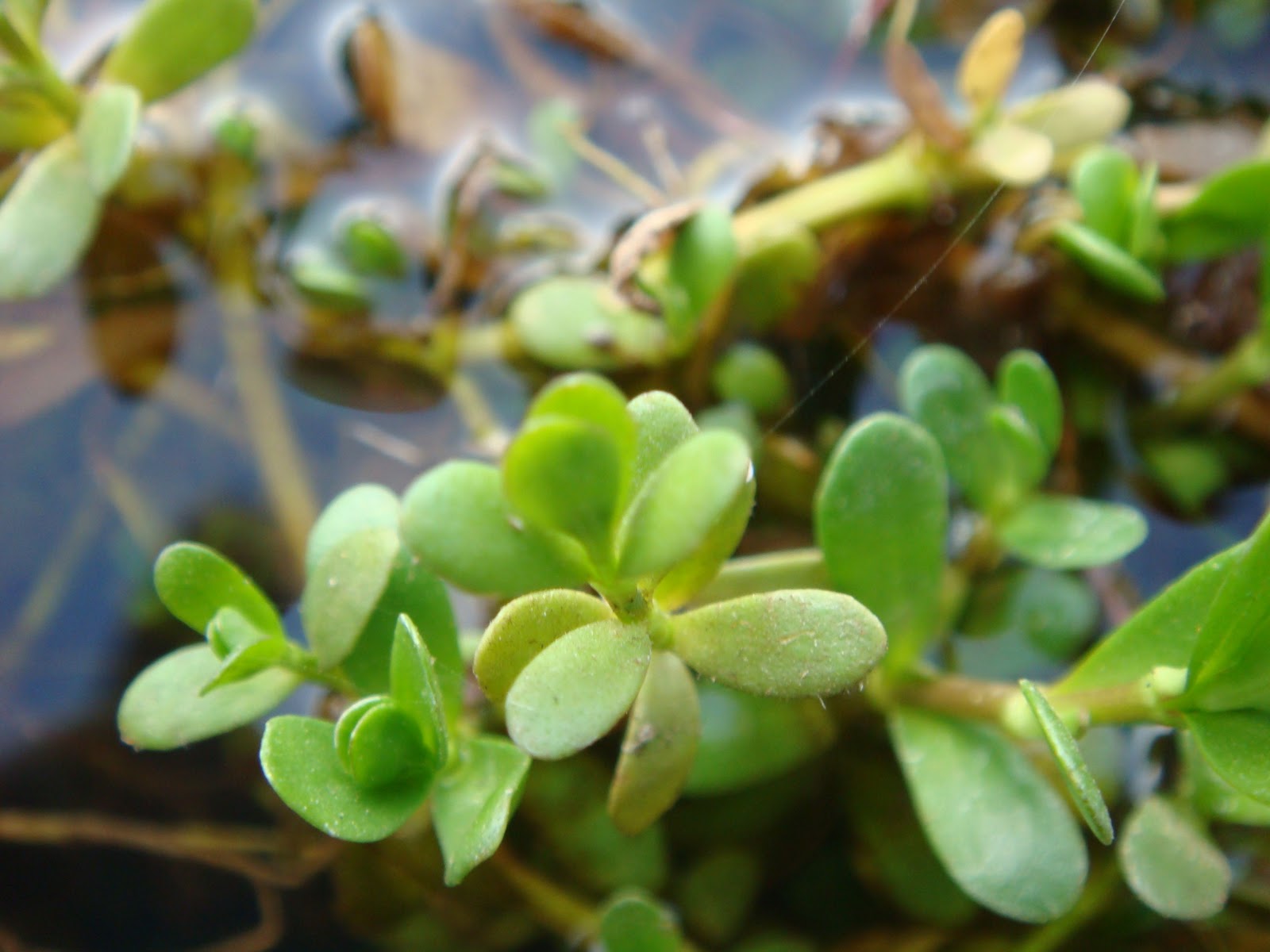Bacopa monnieri - Brahmi

Common Names: Brahmi, Bacopa, Water hyssop, waterhyssop, Herb of grace, Indian pennywort, Thyme-leaf gratiola, Moniera cuneifolia, Herpestis monniera, Bakopa, Hysope d'Eau, Nira-Brahmi, Jai-Brahmi, Jalnaveri, Jalanimba, Aridri, Sambrani Chettu, Monnieria, Monnier’s Bacopa, Monniera, global: Bacopa monnieri (Latin), origin: Brahmi (Sanskrit)
Latin Name: Bacopa monnieri
Origin: Africa, Asia, North America
Short Introduction
Bacopa monnieri, commonly called Brahmi, can be cultivated indoors as an attractive houseplant. It thrives in hanging baskets or pots, forming lush cascades of greenery dotted with delicate blossoms that spill over the edges to create a soft, flowing waterfall effect. Brahmi propagates easily through cuttings, and also by seed. The plant naturally sheds its flowers, saving growers the effort of deadheading. Brahmi comes into its prime in June and blooms through September, providing three to four months of ornamental appeal. Its fruits are capsules containing seeds. Bacopa prefers bright, moist conditions, tolerating some partial shade, but regular watering is required. Overwatering after drought doesn’t help; it’s better to water evenly and consistently. A fertile, humus-rich soil is ideal. Fertilize twice a year with a liquid fertilizer rich in iron. When overwintering, keep it in a bright spot at about 10°C, and trim the plant back to around 20 cm after blooming. Transplant in spring as new shoots emerge.
Detailed Description
Brahmi – Bacopa monnieri is renowned for supporting memory and mental clarity, enhancing alertness and relaxation, and boosting learning efficiency—benefits prized by students, professionals, and older adults alike.
Botanical Information
Bacopa monnieri, or Water Hyssop, is a small creeping annual that can easily be grown at home, thriving beautifully in hanging pots. Brahmi has green stems growing up to 30 cm long, bearing thick, succulent, oval leaves ranging from 5 to 25 mm in length and up to 8 mm in width. The plant loves moisture and grows in marshy habitats but produces charming blossoms—white, pale blue, and occasionally pink. The delicate, five-petaled flowers (sometimes four, depending on the plant) appear one after another, creating a picturesque effect. The plump leaves are arranged in opposite pairs, as if mirroring each other. Despite its low, trailing growth, Bacopa gives a lush appearance, with such gentle flowers that its weighty foliage becomes a secondary thought.
Origin and Distribution
Bacopa monnieri is believed to originate from southern Africa and the Americas. Today, Brahmi grows abundantly in southern India, flourishing in wetland and marshy regions.
Usage / Dosage
Bacopa is a cherished herb in traditional Indian medicine (Ayurveda), known as Brahmi. It is also popular in Japanese folk medicine as a nerve tonic, used against insomnia and nervous tension. Traditionally, it has been employed for asthma, mental illnesses, and epilepsy. Folk healers praise its revitalizing effects on brain cells, its ability to increase cerebral blood flow by dilating blood vessels, and its benefits for short- and long-term memory. These traditional uses also include improvement in concentration, learning, senility, aging, and symptoms of Alzheimer’s and Parkinson’s disease.
Elsewhere in folk medicine, Bacopa is recommended for early-stage Alzheimer’s disease, memory enhancement, anxiety relief, headaches, joint pain, ADHD, allergies, irritable bowel syndrome, sexual dysfunction in men, and as a potent tonic for stress management.
Animal studies on Bacopa extracts have indicated possible antioxidant effects and protection at a cellular level. Some research describes inhibition of acetylcholinesterase, activation of choline acetyltransferase, and an increase in cerebral blood flow. Several studies focus on Bacopa’s protective role in models of neurodegenerative processes.
The primary active compounds in Bacopa—bacosides—are now extensively studied for their potential against age-related diseases. One animal study confirms the beneficial effect of long-term bacoside supplementation as a therapy against rapid neurodegenerative changes, such as in Alzheimer’s disease.
Bacopa’s benefits extend beyond the brain. The herb has shown promise as a hepatoprotective agent for liver function and in some traditional uses, for certain types of liver damage. Two Indian studies reported pronounced neuroprotective effects in hypoglycemic newborns. Some researchers suggest that Bacopa’s bacosides may help enhance the efficacy and reduce undesired effects (such as dependency) of opioid drugs used for chronic pain management.
Certain Bacopa compounds increase the body’s use of nitric oxide, thereby supporting vascular muscle function and positively influencing blood pressure. Several studies investigate Bacopa’s antioxidant properties, including its support for detoxification and neutralization of oxidative elements in renal tissue. One study also noted benefits for clearing the body of heavy metals like arsenic, lead, copper, cadmium, and zinc.
Active Compounds
The best-known and most researched ingredients in Bacopa are its bacosides (or bakosides). There are about a dozen triterpenoid saponins with jujubogenin or pseudojujubogenin as their aglycone component. Additional saponins, named Bacopasides I-XII, were identified later. Other constituents include alkaloids such as brahmine, nicotine, and herpestine, along with D-mannitol, apigenin, hersaponin, monnierasides I–III, cucurbitacin, and plantainoside B.
Recent research focuses on bacoside A, bacoside A3, Bacopaside II, Bacopasaponin C, and a jujubogenin derivative of Bacosaponin C, which together comprise about 5–7% of the plant extract.
Traditional Dosage
For powdered Bacopa, take one heaping teaspoon in the morning and evening. Let it soak in about 100 ml of water for a few minutes, then stir well and drink. This method ensures maximum effectiveness. As a tea decoction, use 5–15 g per day. With diligent use, noticeable effects are typically seen after about twenty days. For capsules, take one capsule in the morning and another in the afternoon for at least one month.
Brahmi can also be enjoyed raw as a spice to impart a bitter note to dishes, or as a light sprinkle on buttered bread and in spreads.
Warning: Not recommended for young children, pregnant, or breastfeeding women.


